Jonathan Hui guests on the HomeKit Insider podcast to discuss history, unique projects, and what the future holds with Matter and Thread standards.
Sitting down with your hosts this week is Jonathan Hui, Principal Software Engineer at Google and VP of Technology at Thread Group.
Before getting to the interview, we discuss some brief news in the world of HomeKit. The Home Widget app was updated this past week to now support sensors, run Shortcuts without launching the app, and include new widget sizes.
LG also announced a new mobile touchscreen device that will support both HomeKit, as well as AirPlay 2.
Links from the show
- Home Widget app for HomeKit
- LG Introduces mobile Touchscreen with HomeKit, Airplay 2 Compatibility
- Jonathan Hui on Twitter
- Thread Case Studies
- OpenThread Website
Stephen Robles: If you could, Jonathan, maybe start out telling us about yourself and how you got to your current position, maybe at both Google and The Thread Group.
Jonathan Hui: You know, I got started in the space during undergrad. I was really curious about low-power wireless communications. This was kind of just before ZigBee, back in 2003, had come to market. Then when I got to grad school, I was doing more research in real power wireless.
At that time, everybody was saying, "well, low-power wireless has to be really low cost, low power. We have to do very specific things for specific applications." And that's how you got to these proprietary wireless systems that don't integrate well with others and how we wound up with the hubs and everything today.
My primary research at grad school was what if we could just put all of this on the internet protocol or IP and have this become a general-purpose network. From there, I went to Cisco and worked on a lot of mesh networking for the smart grid, you know — having electric meters communicating wirelessly and reporting all your information.
And then around 2014, 2015, Nest had made this announcement that we're starting this thing called Thread and were going to target the consumer space, and we're going to do it on IP. That was just right up my alley. I needed to be a part of that.
I'm really interested in the consumer space because you know, the consumer space is always interesting.
So I joined Nest in 2015 at the same time as The Thread Group. Nest then got acquired by Google and that's where we are today.
Stephen: So Nest, wasn't a part of Google when you joined, correct?
Jonathan: Nest got acquired by Google in 2014-ish and I joined in January of 2015. So I joined shortly after.
But the whole Thread initiative was actually started within Nest before I joined and before Nest was a part of Google.
Andrew: I was all in with that early Nest stuff. I loved it so much. It was only after that acquisition by Google, that I finally had to leave Nest for another smart thermostat.
I felt like there was no way they were ever going to work with Apple and HomeKit. When Apple had announced their platform, as cool as this hardware is, who knows where this is going to go under the Google umbrella. So I had to break away from it.
Jonathan: It was certainly an exciting time. That early Nest stuff was really what drew me to Nest. When I first saw this, I said, oh, it's a thermostat. It's great. But not sure how I could participate in that, you know, creating of the Nest story.
Once they announced a much bigger vision about the connected home, the smart home, the thoughtful home, that's all where all the devices are connecting through this general-purpose low-power wireless network. That's really what got me interested and said, okay, I gotta be a part of this.
Stephen: Well, Jonathan, because you are working on Thread and at Google, what is your smart home?
I'm curious what ecosystems you're in. Are you in all of them or are you a, you know, more HomeKit or more Google?
Jonathan: Yeah, it's actually kind of interesting. As a developer of Thread, I pretty much have everything that supports Thread in my home. So Google, Apple, and now Eero, which is effectively Amazon.
So if you ran some Thread development tools and do the equivalent of a Wi-Fi scan in my house, you would see many different Thread networks that have Apple, Google, Eero, all in the names.
In terms of the devices, my family actually uses, well, again, I have all the different ecosystems. Not because I want to be fair to them, it's just the different ecosystems have devices that do the best, right?
Google, for example, we have the Nest Yale lock and the Nest thermostats and those integrate really well.
The Yale lock already supports Thread so that's great. When it comes to smart plugs and light bulbs, Eve and Nanoleaf are the companies that make the best products out there right now. And for that, we use at HomeKit. So today it's kind of the unfortunate piece where we have to live with different ecosystems.
It is kind of confusing for the kids. They love controlling that stuff. They love playing with the lights, changing the colors. They love that every time we come home, they love going up to the door and saying, "Hey, can I punch in the code?" But it is somewhat confusing to them because they are always yelling at the smart assistant or a smart speaker. "Hey, Siri," "Hey, you know, why don't you understand me?"
Stephen: Matter looks to be the unifier of all things, so since you have all three, which one will you land on Jonathan?
Jonathan: You're really putting me in the hot seat now!
Today that I do find the different assistants have their strengths in different areas. Google Assistant is really good at general knowledge and facts.
I have to say right now that the kids do find Siri — that being HomeKit — doing better at that part because the devices that they're controlling work with Thread.
I do have some Bluetooth-based lightbulbs and they're not as interesting to the kids. They'll say something and then they'll sit there. Okay. When's it going to happen?
Andrew: So how many HomePod minis do you have over there?
Jonathan: Uh, I have three HomePod minis and two Apple TV 4K.
Stephen: What is your general take and outlook on Matter? Are you excited for this thing? Do you believe it's going to fulfill the promise of unifying all these smart home standards?
Jonathan: I really am excited. A lot of the challenges that the smart home industry is facing are really kind of challenges that are to both product developers as well as users themselves.
We work closely with a lot of vendors. We have to work one-on-one with them to help integrate with Google while at the same time, we know that they have to work one-on-one with Apple and others. They need to support very specific protocols and then they have to sell different flavors [of the same product].
Yale, for example, makes one different lock for every different ecosystem and protocol out there today. And that's just painful and costly. And no, I particularly don't care to spend a couple of hundred dollars just on a deadbolt.
If they can get that price down because now they only have to build one lock, I think a huge boost. And the same thing for users, right?
When we walk into a store, we know exactly what we want. We know, "oh, this thing has to talk with HomeKit."
The thing that I come back to often is like, when it comes Christmas time, or I'm trying to get a gift for a friend. Being one of the players or developers in smart home industry, I want to get them a smart home product, but then I kind of get stuck.
I don't actually know if they are a HomeKit user or an Assistant user or so I don't even know how to buy a product for them. That's a loss of a potential sale right there because now I'm going to go find something else where I don't have to guess at what my friend is using.
I think kind of just from a general user perspective, it's exciting to be able to have the choice of getting a single ecosystem and not worrying about the devices.
Andrew: So you're still going to be left with things like cameras or speakers and things like that. They're going to be the outliers as they won't be supported with Matter 1.0.
How will this all come together? Is it going to be too confusing? Is that going to make a bigger hurdle for people to get over in the short term until Matter is more entrenched in the ecosystem and more mature? Once it has added those missing categories?
Basically, how do you think that's going to play out for the consumer? In stores, are you going to have a new category next? How is that all just going to be displayed to the consumer?
Jonathan: You know, I'm going to try and sugarcoat this.
I think it's going to take some time to get this rolled out. There will be challenges both in marketing and education and just communicating to the consumer when Matter rolls out and how this differs.
There are a lot of things that we're doing to try and ease this transition. Matter supports this notion of bridges, as we know. So, existing devices that speak a different protocol and do rely on a hub, at least there's now that option for that hub to support a Matter.
I do sympathize with others. I got this light bulb and it supports ZigBee or Bluetooth. How do I know it's going to work with my Matter-based ecosystem? I think in the short term, the reality is what we're going to have this world where you have both the existing in parallel with Matter.
Stephen: Working on Thread, what has it been like for yourself to work on this standard? Again, it's been crossing platforms, crossing companies.
Jonathan: I'm at heart, a software engineer. So that, that's kind of my primary job.
I'm the maintainer of the Open Thread project, which is an open-source implementation of Thread. At the same time Thread is not intended to be a proprietary technology for Nest. We really wanted to open it up to other users, other industries, you know, not just the consumer smart home space, even.
I also spend a lot of time in what's called The Thread Group, which is this standards organization. It maintains the Thread specification and basically gets the industry to agree on what features are most important.
You know I started in Thread in 2015 and we're in 2022 now. It's been quite a long journey in getting this technology out. Google was the first to actually deploy Thread in 2017, I think. Even then, Thread's adoption has been taking some time. It didn't really start to take off until we got more than just Google using it.
In 2020 is when Apple got the HomePod mini out there. Then they followed that up with the Apple TV 4K. Eero had 15 radios for a lot of time, but they just never lit it up. Now they are with the advance of Matter and Thread. I think they're, they're seeing the opportunity that they've laid down in the hardware at least.
So yeah, it's been an interesting journey. It's certainly has had its ups and downs, and certainly, the question is if Thread really going to succeed in the marketplace? And I think with the momentum behind Matter, I think there's really good opportunity there.
Looking forward, both Matter and Thread are looking to go beyond the smart home. Right. The neat thing with Open Thread being an open-source project is you get the whole spectrum of developers from just people trying to deliver millions of products to smart home tinkers. Or just developers doing Raspberry Pis and whatnot.
It's actually been very cool to keep tabs on the community that's using Open Thread and see where Open Thread is being used across the world in industries that we wouldn't even imagine.
Andrew: So what other applications are there that you've seen of Thread outside of the smarter?
Jonathan: Um, there's actually a bunch of these case studies that are on the Thread Group website. We've seen Thread being used in solar farms. You have solar farms that have these monitors to monitor how well the PV panels are doing.
The PV panels have, you know, in some solar farms track the sun. So, they need a way for them to rotate and communicate. You can imagine with the amount of PV panels out there, there are potentially a lot of endpoints that have to be deployed.
And there's a company that, that developed a whole PV monitoring solution. That's based on Thread.
In Paris, there is a kind of boutique department store, that actually deployed these smart hangars. They have sensors in them. They can tell if someone touched a hanger, they even have a smart display with a touchscreen.
They only have one piece of the clothing or article on, on the rack. And so it may not be the proper size. Their use case is that a consumer will get interested in a piece of clothing, take it to the dressing room and realize it's not the right size. They can actually use the display on the hanger. So they request a different size to be delivered to them.
Andrew: Wow. That's incredible. Well, thank you so much Jonathan for stopping by and hanging out with us today.
Those interested in sponsoring the show can reach out to us at: andrew@appleinsider.com
Keep up with everything Apple in the weekly AppleInsider Podcast — and get a fast news update from AppleInsider Daily. Just say, "Hey, Siri," to your HomePod mini and ask for these podcasts, and our latest HomeKit Insider episode too. If you want an ad-free main AppleInsider Podcast experience, you can support the AppleInsider podcast by subscribing for $5 per month through Apple's Podcasts app, or via Patreon if you prefer any other podcast player.
 Andrew O'Hara
Andrew O'Hara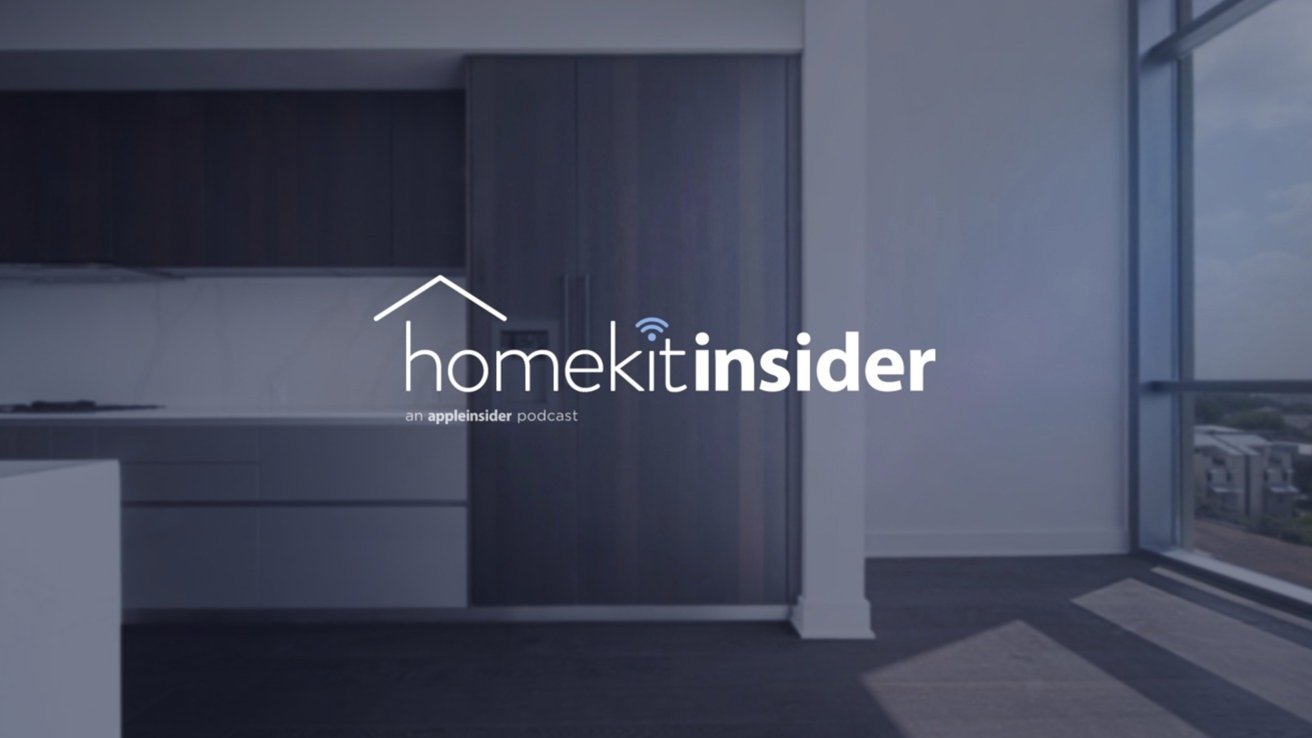
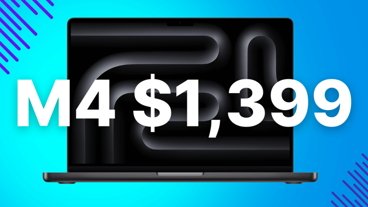






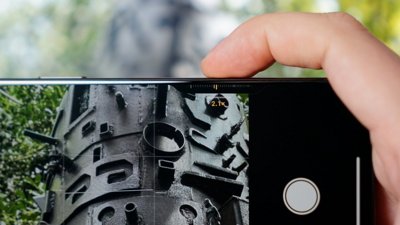
 Charles Martin
Charles Martin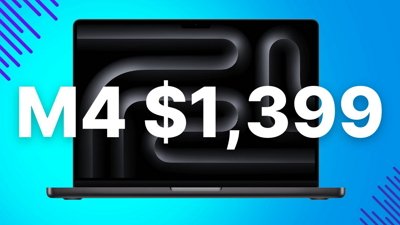
 Christine McKee
Christine McKee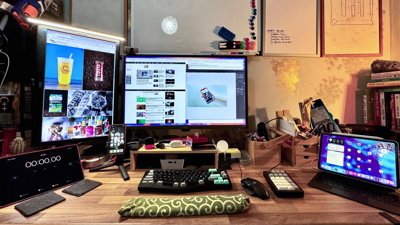
 Malcolm Owen
Malcolm Owen
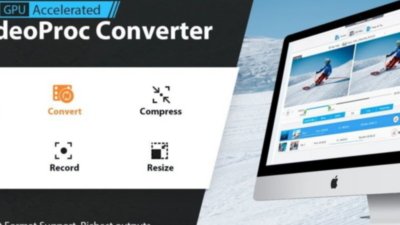
 Sponsored Content
Sponsored Content

 Amber Neely
Amber Neely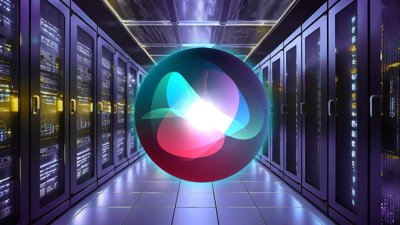










There are no Comments Here, Yet
Be "First!" to Reply on Our Forums ->